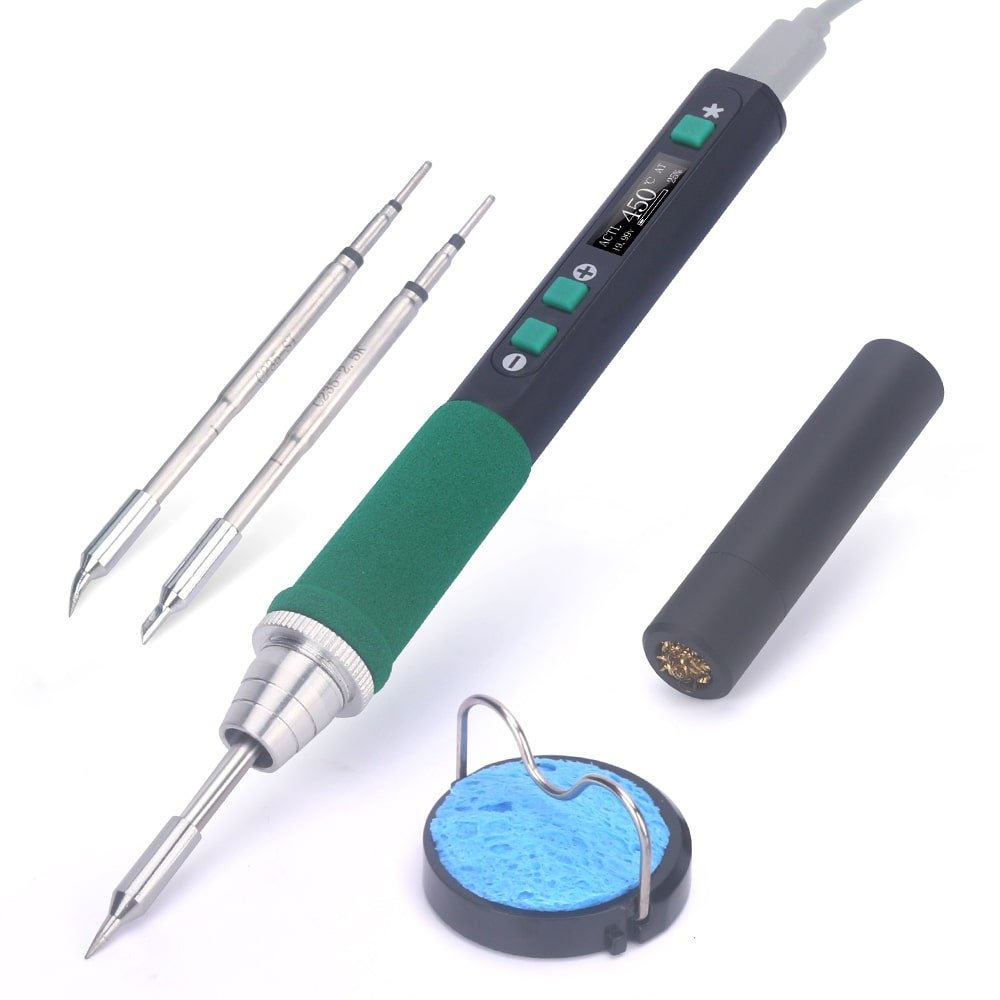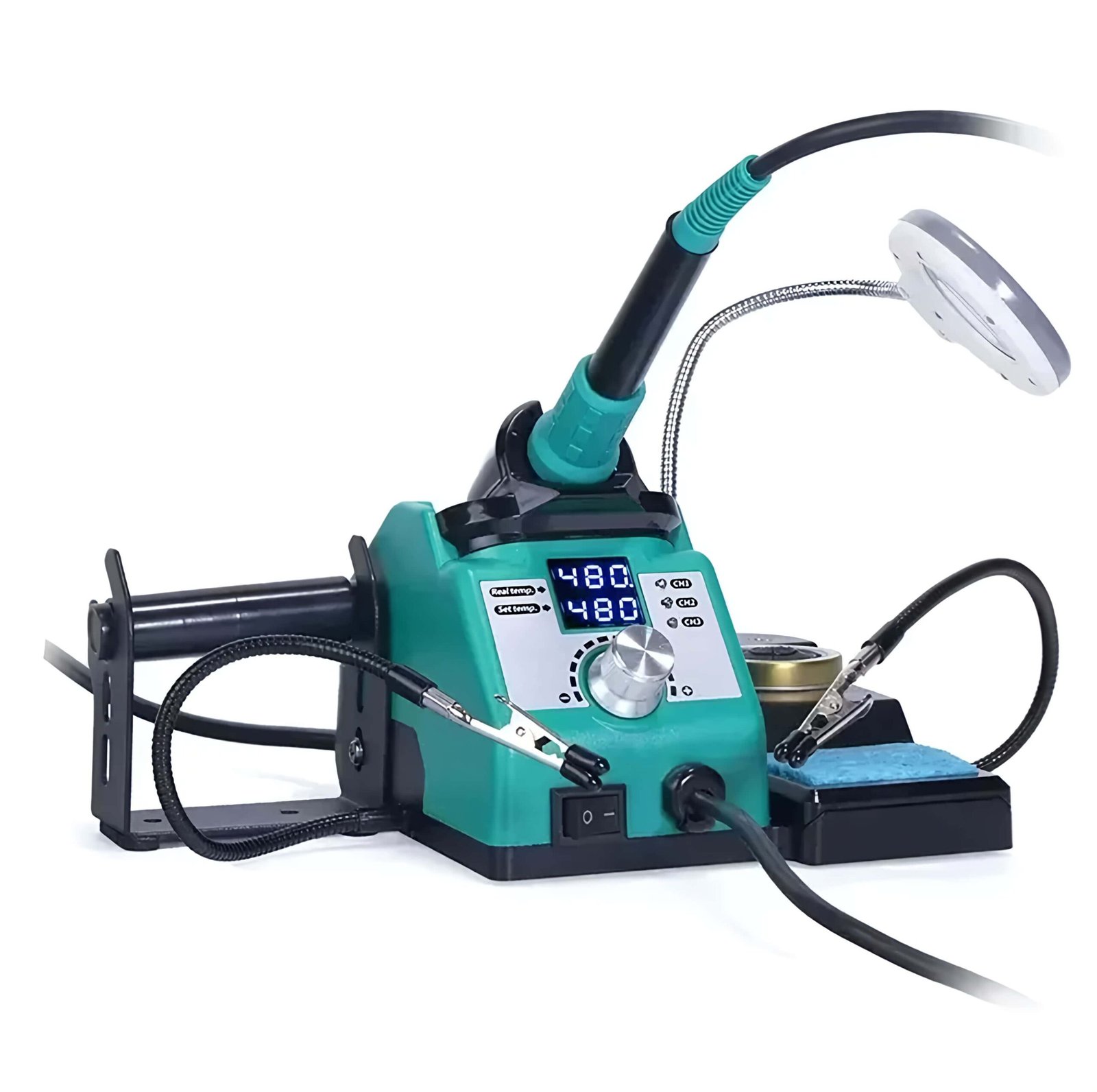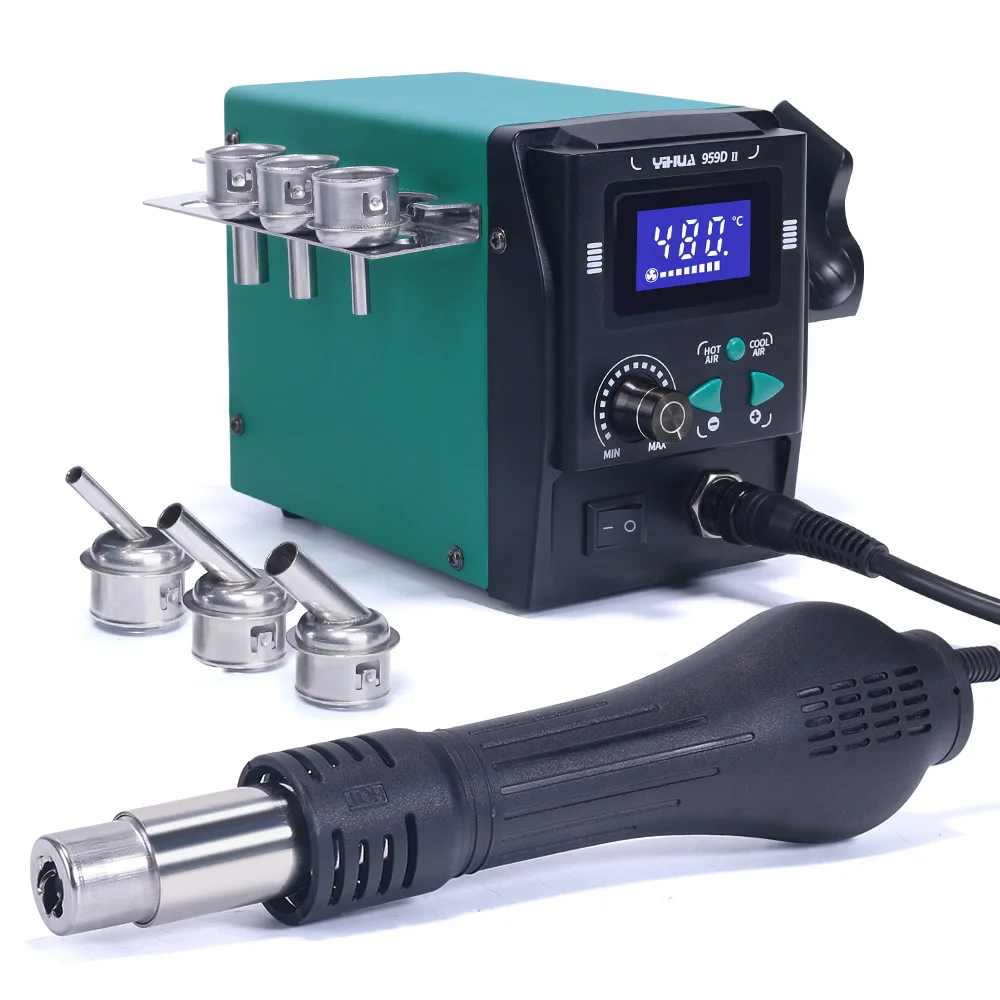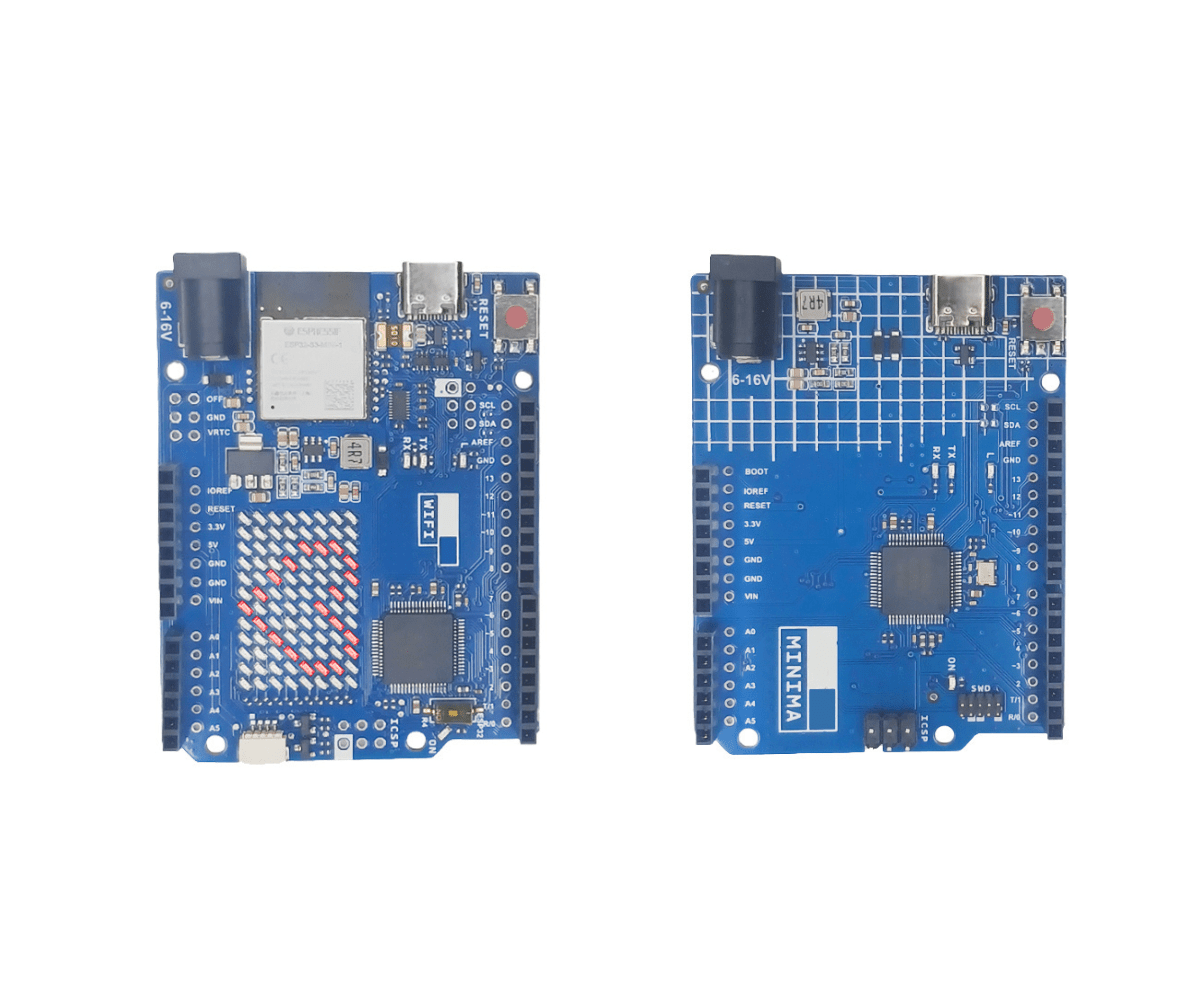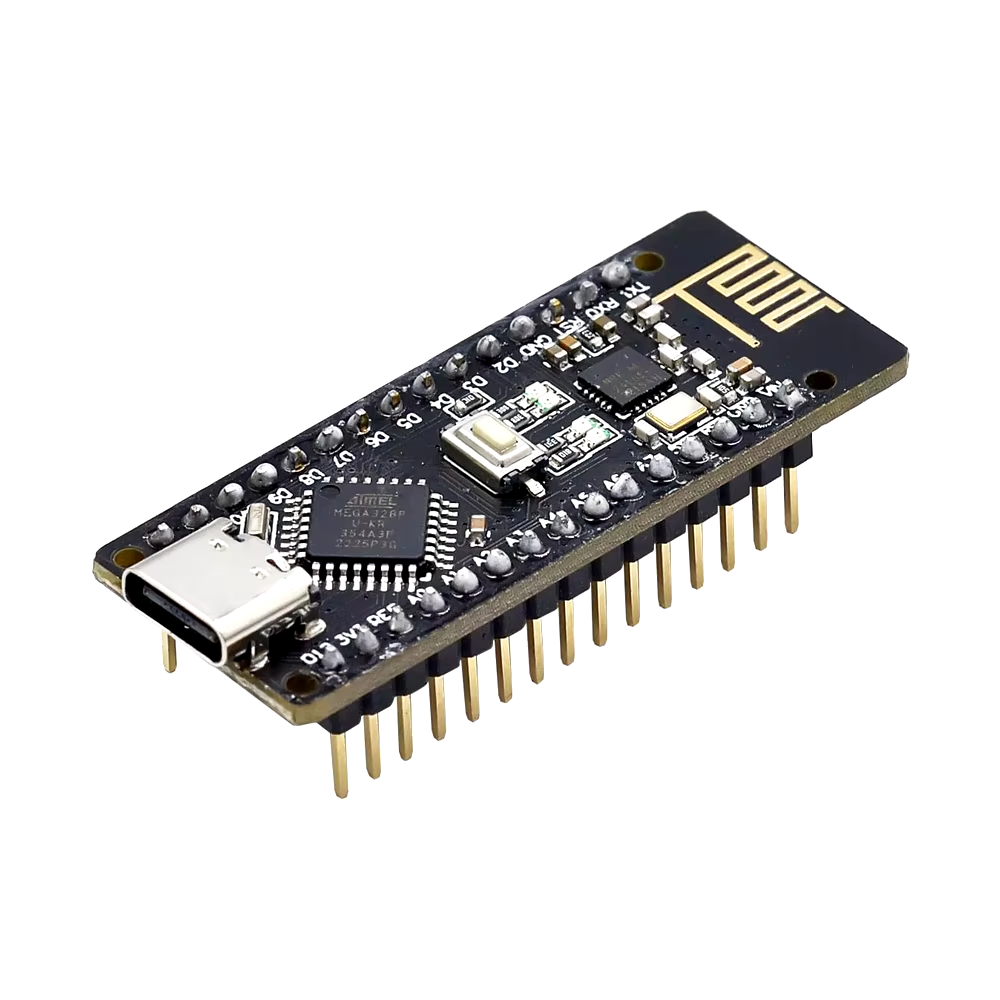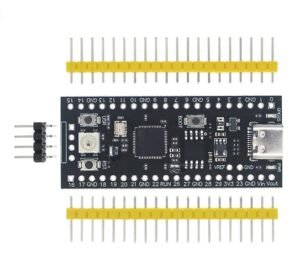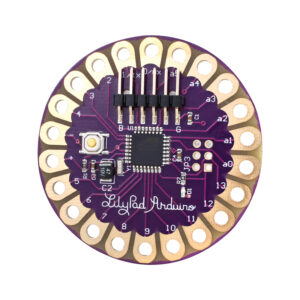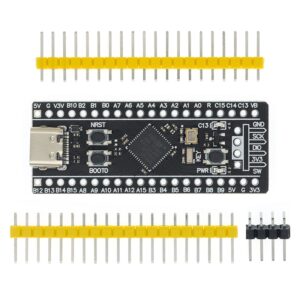Embarking on the journey of advanced soldering requires not just a steady hand and an eagle eye, but also an infusion of wisdom from those who have ventured before. This guide serves as your portal into the sophisticated realm of advanced soldering techniques, providing expert tips for the meticulous task of assembling electronic circuits.
Whether you’re piecing together intricate components or reinforcing established connections, this soldering guide is tailored to enhance your expertise. Let us guide you through the nuanced landscape of solders and fluxes, all while sharpening the skills that will see your projects not only succeed but excel.
Key Takeawayssoldering iron tip
- Understanding advanced soldering techniques is essential for precision in assembling electronic circuits.
- Soldering guide and soldering tips from experts can significantly improve soldering outcomes.
- Developing expert-level soldering skills requires patience and practice guided by reliable information.
- Choosing the right materials and employing proper techniques are crucial for successful advanced soldering applications.
- Maintaining up-to-date knowledge on soldering innovations contributes to consistent progress and mastery.
Exploring the Fundamentals of Soldering
Delving into the world of soldering begins with grasping its cornerstone principles. Understanding these fundamentals not only enhances the soldering process but also ensures the durability and functionality of electronic devices. Let’s embark on a journey to decode the basics, techniques, and the critical contrasts inherent in this essential skill.
Understanding the Soldering Process
The soldering process is a meticulous art, where precision plays a pivotal role. At its core, this intricate procedure involves joining metal workpieces, not by melting them, but by using a ‘solder’ – a lower-melting-point filler metal. The choice of solder type directly impacts the strength and conductive quality of the electrical connections. The skill lies in carefully melting the solder so that it flows and bonds, which typically happens at 350°-400°C for electronics soldering. Mastering this technique is indispensable for anyone keen on DIY electronics or professional circuitry jobs.
Distinctions Between Soldering and Welding
While often mentioned in the same breath, soldering and welding are distinctly different. Welding fuses metal pieces together by melting their edges and blending them, often at extremely high temperatures. Soldering, on the other hand, involves adhering components at much lower temperatures, without altering the state of the pieces being joined. This key variation necessitates different skills and tools, marking soldering as a more subtle and intricate thermal joining process.
Materials and Tools Overview
The selection of materials and tools in soldering is as vital as the process itself. From various solder types like lead-tin to lead-free options, each has unique properties and applications. Soldering materials also extend to the use of flux – a substance that promotes adhesion by eliminating oxidation from metal surfaces.
In terms of tools, a reliable soldering iron kit with adjustable temperature, a soldering stand for stability and safety, goggles, and heat-resistant gloves form the kit of essentials. These tools facilitate precise work, enabling crafters to navigate through complex circuit boards and electronic components with finesse.
Now, equipped with a foundational understanding of the soldering process, distinctions from welding, and the importance of using the right materials and tools, the next steps will delve further into the specific techniques and safety measures that distinguish proficient soldering practice.
Choosing the Right Soldering Equipment
Embarking on advanced soldering tasks demands meticulous preparation, beginning with the procurement of the most apt soldering equipment. A quality soldering iron with adjustable temperature control is paramount for tasks requiring high levels of accuracy. The precision afforded by such a tool transcends the commonplace, providing an unshakeable foundation for any sophisticated soldering endeavour.
Yet, a soldering iron alone does not a solderer make. The amalgamation of flux to enhance solder flow, a robust soldering stand for iron support, and a suite of cleaning materials are equally critical in cultivating a workspace that not only champions safety but also champions longevity of your tools. It’s about creating an ecosystem where each element complements the others, ensuring a seamless soldering symphony.
Moreover, considering the vast spectrum of solder types available, discernment is key. The solder selection should harmonise with the project at hand, a decision that influences the integrity and endurance of your electronic assemblages. This considered choice is a testament to the solderer’s foresight and understanding of the craft.
| Equipment | Function | Importance |
|---|---|---|
| Quality Soldering Iron | Heat application | Essential for precise soldering |
| Adjustable Temperature Control | Temperature modulation | Crucial for working with diverse components |
| Flux | Improves solder flow and bond | Key for strong and clean connections |
| Soldering Stand | Secure holding of the iron | Prevents accidents and ensures safety |
| Cleaning Materials | Keeps soldering tip clean | Vital for the longevity of the iron |
Completing your arsenal with a range of sponges and cleaning pads not only embodies professionalism but also a commitment to the craft. These humble tools, often overlooked, are indispensable in maintaining a pristine soldering tip, pivotal for creating immaculate solder joints time and time again.
In essence, the consummate solderer’s kit is a harmonious blend of carefully chosen equipment – each element as significant as the next, converging to forge an enviable capability in the art of soldering.
Preparation Strategies for Precision Soldering
The initial steps towards successful and precise soldering are often overlooked in the eagerness to meld components. However, initiating precision soldering starts with creating an ideal environment and having an impeccably prepared workstation. Engaging in the artisanal process of electronics assembly is akin to painting; both require a clean palette and the right setting to yield masterpieces. The focus of this section is to illuminate the preparation phase, which is fundamental to achieving the finest solder joints.
Setting Up Your Soldering Workstation
When preparing a workstation, several aspects must converge to establish an optimal soldering domain. With precision as the cornerstone of soldering endeavours, it is paramount that each detail is given due consideration. The workstation is the arena in which the delicate dance of soldering unfolds, and as such, it should be conducive to the rhythm of your craft. Here are vital elements to configure:
- Ventilation: A breath of fresh air isn’t just a metaphorical necessity. Workstations must be well-ventilated to dispel toxic fumes that emanate during the soldering process.
- Lighting: Illumination is crucial. Proper lighting ensures that even the most minute detail is visible and that precision is not left to chance.
- Stability: An unwavering work surface is quite literally the foundation of precision soldering, keeping all potential slips at bay.
- Organisation: Equip yourself with well-arranged and easily accessible tools and materials, creating a state of readiness for every phase of soldering.
Cleaning and Tinning Your Soldering Iron
Before you delve into the joining of metals and the creation of electrical pathways, your soldering iron must undergo a preparatory ritual. It involves a meticulous cleaning of your servant of heat – the soldering iron. Next follows tinning – a critical prelude to the actual soldering.
To begin, cleaning a soldering iron tip is akin to pruning a vine; it enables new growth or, in this case, facilitates pristine heat transfer. Tarnish and debris are swept away, leaving a fresh surface to work with. Subsequently, the act of tinning a soldering tip involves coating it with a thin layer of solder. This shields the tip from oxidation and provides an even thermal bridge for the transfer of heat – an essential servant in the quest for the perfect joint.
| Action | Process | Relevance |
|---|---|---|
| Cleaning | Removal of oxidation and residue from the tip | Crucial for optimal heat transfer and longevity of the tip |
| Tinning | Application of a fresh solder layer to the cleaned tip | Protects against oxidation and enhances soldering precision |
Assembling the palette of your soldering workstation with these strategies sets the stage for a symphony of connections, harmoniously crafted by your skilful hands. So let us embark upon this journey of transformation with a workstation that mirrors our commitment to excellence in the craft of precision soldering.
Comprehending Different Solder Types and Their Uses
When one ventures into the detailed sphere of soldering, acknowledging the diverse types of solder is paramount. This is not just a matter of preference, but an essential step to ensure the integrity and sustainability of your projects. Each variation of solder, from lead-tin solder to lead-free solder, carries its distinct properties, applicable environmental considerations, and implications for conductivity. This understanding is the springboard to proficiently selecting the correct solder for your specific requirements.
The traditional lead-tin solder, known for its eponymous constituents and tender melting point, has long been favoured for its ease of use and reliable conductivity. Despite these advantages, its environmental and health implications cannot be understated, leading to a progressive shift towards lead-free solder. Lead-free variants commonly incorporate metals such as silver and copper, enhancing the alloy’s strength while aligning with environmental considerations. These solders, albeit challenging with their elevated melting temperatures, offer a responsible approach to electronic assemblage.
Soldering alloys like those integrating tin-silver, while being costlier, are devised to meet demands for high-reliability applications. With their formidable connection strength and slightly lower melting points compared to pure lead-free alternatives, they present a balanced proposition for intricate and demanding soldering tasks.
| Solder Type | Conductivity | Environmental Impact | Temperature | Cost |
|---|---|---|---|---|
| Lead-Tin (Sn-Pb) | High | Negative | Lower | Lower |
| Lead-Free (Sn-Cu, Sn-Ag) | Moderate to High | More Sustainable | Higher | Moderate-High |
| Tin-Silver (Sn-Ag) | Very High | More Sustainable | Moderate | High |
Recognising the implications of each solder type allows one to make informed decisions that respect both the demands of the project and the prerogatives of our environment. Aspiring to mastery in soldering is an endeavour as much about technical proficiency as it is about making choices that reflect our responsibility towards the world we inhabit.
Mastering the Soldering Iron for Advanced Applications
Forging ahead into the domain of advanced soldering, one must reckon with the sophisticated intricacies of wielding a soldering iron. To accomplish feats of miniaturised engineering and connection longevity that defies wear and tear, a profound comprehension of the tools at hand is instrumental. The capacity for soldering iron mastery is not innate—it blossoms from patient practice, sharpened focus, and an understanding of the subtle dance between iron and alloy.
Central to the command of intricate soldering tasks is the practitioner’s prowess in manipulating tools to perform precision work. Let us now delve deeper into the nuances of temperature control and fine soldering techniques that represent the hallmarks of advanced soldering skills.
Temperature Control and Its Importance
Temperature control stands as the fulcrum upon which the success of delicate soldering operations pivots. Controlling the temperature of the soldering iron is critical for it determines the quality of the bond and the safety of the components being joined. Excessively high temperatures may damage sensitive circuits, while too low temperatures could lead to frail and unreliable joints. The convergence of the right temperature with the perfect timing is paramount in achieving permanent, robust connections.
In the modern electrical crafting arena, one cannot rely on guesswork; meticulous adjustment and steadfast monitoring of the soldering iron’s temperature are indispensable. The use of a high-quality, adjustable soldering iron ensures precision in this aspect, representing a cornerstone in the foundation of advanced soldering.
Techniques for Fine Soldering
Fine soldering, akin to the work of a jeweller, demands a combination of expertise, a steady hand, and a bevy of methods tailored to the sensitive nature of the work. Ensuring even heat distribution across the joint, applying the correct quantity of solder, and averting prolonged exposure to heat are essential techniques for accomplishing fine soldering.
The art of creating minute soldered connections calls for a methodical approach, where the iron tip’s contact time, motion, and angle are calculated with utmost precision. The fine balance of these elements culminates in the formation of clean, sleek joints that stand as testaments to the solderer’s finesse.
Critical too is the condition of the soldering iron tip, which should be impeccably maintained. A well-tinned and clean tip ensures optimal transfer of heat and is less susceptible to the pitfalls of oxidation. Here lies the key to seamless joints and superior results in fine soldering tasks.
Ultimately, the zenith of soldering proficiency is not one reached through shortcuts or haste. It unfolds through the gradual layering of knowledge, experience, and reverence for the craft, with each careful application of the soldering iron cementing one’s status as a maestro of the soldering arts.
Advanced Soldering Techniques
The evolution of soldering has brought forth a variety of advanced soldering techniques imperative for modern electronics manufacturing and repair. In this section, we delve into two critical disciplines within this spectrum: Surface-mount technology (SMT) and through-hole soldering mastery. Both methods demand precision, a comprehensive understanding of the intricacies involved, and a commitment to ongoing learning and development in the art of soldering.
Working with Surface-Mount Technology (SMT)
The miniaturisation of electronic devices has been primarily driven by Surface-mount technology, a method that allows for components to be mounted directly onto the surface of a printed circuit board (PCB). SMT has revolutionised the electronics industry, demanding soldering proficiency that accommodates the delicate nature of tiny resistors, capacitors, and integrated circuits. SMT not only challenges the solderer to work within tightly confined spaces but also requires acute attention to soldering technique specifics such as solder paste application, reflow temperatures, and the avoidance of tombstoning – where components stand on end due to surface tension during soldering.
- Component Precision Positioning – Ensuring components are accurately placed before soldering.
- Reflow Soldering – Mastering the process of melting solder paste under controlled heating practices.
- Quality Inspection – Employing methods like x-ray inspection to verify solder joint integrity.
Through-Hole Soldering Mastery
Conversely, through-hole soldering pertains to the process of inserting component leads through pre-drilled holes on a PCB and then soldering. This traditional technique has stood the test of time and remains prevalent for applications requiring sturdy and durable connections. Mastery over through-hole soldering translates to a firm grasp over components, often larger in size than SMT counterparts, and ensuring that they remain immobile during the application of solder, thus preventing cold joints. It’s a dance of coalescing old-school robustness with contemporary precision.
- Drill-Hole Integrity – Checking that PCB holes are clear and well-defined for lead insertion.
- Lead Trimming – Mastering the art of trimming component leads after soldering for a neat finish.
- Heat Application – Balancing heat distribution to create consistent and reliable soldered joints.
These soldering mastery techniques are but a sampling of the invaluable practices within the realm of electronics manufacturing. A proper application of SMT and through-hole soldering techniques ensures not only the functionality of electronic devices but also their longevity and reliability – a testament to the solderer’s skill.
How to Address and Rectify Common Soldering Problems
Addressing common soldering issues is a critical step towards ensuring the integrity and functionality of electronic devices. Among the problems that often arise during soldering are cold joints, solder bridges, and component damage. These issues, if left unresolved, can lead to faulty circuits and compromised performance. Here, we provide essential problem-solving techniques designed to rectify these common setbacks.
A cold joint is typically formed due to insufficient heat application during the soldering process, resulting in a brittle and unreliable connection. If not rectified, this can lead to circuit failure. To tackle cold joints, it’s essential to reheat the solder until it flows smoothly and allows the metallic components to fuse correctly, hence guaranteeing a secure electrical connection.
Conversely, solder bridges occur when excess solder connects two or more adjacent pins or pads that are not meant to be electrically connected, potentially causing a short circuit. Remedying this requires precision and care to remove the excessive solder using a desoldering braid or pump, thereby preventing unintended electrical pathways.
Component damage is often the result of overexposure to heat, which can be mitigated by using heat sinks or by limiting soldering time to the necessary minimum. It’s imperative to assess the heat tolerance of individual components and adjust the soldering iron’s temperature and contact time accordingly.
Effective problem-solving within soldering extends beyond mere diagnostics; it encompasses a comprehensive strategy that integrates inspection, corrective action, and refined technique. Below, a structured approach to addressing common soldering challenges is delineated:
- Identify the issue: Use magnification and good lighting to detect cold joints, solder bridges, and signs of component damage.
- Apply heat carefully: Reheat problematic joints with a clean, well-tinned soldering iron tip, ensuring proper melting and flow of solder.
- Remove excess solder: Utilise desoldering tools such as solder wick or suckers to address solder bridges and excessive solder application.
- Protect Components: Implement protective measures like heat sinks or pulsing the heat to prevent thermal damage to components.
- Verification: Re-examine the soldered joint post-correction to confirm the rectification of the problem and the establishment of a sound connection.
Each of the techniques employed for overcoming soldering obstacles serves a precise purpose, targeting the root cause and delivering a solution that restores the circuit to its optimal state. The following table summarizes the problems and their respective corrective actions:
| Issue | Cause | Rectification Method |
|---|---|---|
| Cold Joints | Insufficient heat | Reheat to proper flow and fusion |
| Solder Bridges | Excess solder | Remove using desoldering braid or pump |
| Component Damage | Excessive heat | Heat sink use and limited heat application |
As underscored, addressing common soldering errors is akin to synthesising science and craftsmanship. It requires not only the technical knowledge to identify and rectify issues but also the artistry to execute repairs with finesse. Hence, pursuing excellence in soldering necessitates a consistent refining of techniques and adherence to best practices that ensure robust and reliable electronic assemblies.
Tips for Efficient Circuit Board Soldering
In the pursuit of high-efficiency circuit board soldering, the emphasis is squarely on precision and care. The following tips distil the essence of best practices in soldering techniques, especially pertaining to sensitive electronics. As we envisage achieving impeccable work, it is instrumental to mind the specifics of component placement, flux application, and a systematic approach to the handling of delicate circuitry.
Component Placement and Flux Application
Successful circuit board soldering begins with meticulous component placement. This strategic approach involves positioning each component with intent and accuracy, ensuring that it aligns perfectly with the corresponding pads on the board. The key is in the precision and the assurance that every placement sets the stage for a cleaner and more secure soldering process.
Flux application plays a quintessential role in improving the quality of solder joints. It’s essential to use flux judiciously to prevent oxidation and to promote better wetting by the solder, which in turn enhances the electrical connectivity. The right amount of flux at the right location can decisively reduce instances of bridging and cold joints, making it a staple for high-performance circuits.
Dealing with Sensitive Electronics
Handling sensitive electronics demands a convergence of skill and subtlety. Each action – from applying heat to adding solder – must be executed with a deft touch, particularly when correcting errors. Retracting a misplaced component or excess solder calls for desoldering techniques that carefully mitigate the risk of further damage to the electronics. These skills are gained over time, signifying a mastery over both the tools and the materials.
Gravitating towards the best-suited soldering tip cannot be overstated when working through sections of a circuit board. It is imperative to select the tip that corresponds to the job at hand, as it directly influences the heat distribution and the final quality of the solder joints. A practice embedded in logic and careful assessment ensures that sensitive electronic elements are spared from cumulative heat damage, preserving their integrity and function.
As with any craft, proficiency in circuit board soldering is a seamless blend between theory and application. It is an ever-evolving learning curve where the finest outcomes are bourne of a continual dedication to precision and care.
Adhering to Essential Soldering Safety Measures
Soldering, an activity steeped in precision and finesse, also demands a robust commitment to safety. Advanced soldering practices necessitate strict adherence to soldering safety guidelines that prioritise the well-being of the practitioner and the integrity of the work environment.
Key among these safety measures is the deployment of eye protection. Every solderer must armour themselves with safety goggles, forming a defensive barrier against any potential debris or splashes that arise during the soldering process. This protective gear is not a mere accessory but a fundamental shield that preserves vision against the unforeseeable.
Beyond the safeguarding of sight, heat protection is another critical element. Soldering entails exposure to high temperatures, and heat-resistant gloves are the bulwarks that stand between the craftsman and the perilous heat. These gloves must be seen as an extension of one’s tools, enabling the handling of hot materials while obviating the risk of burns.
The hazards extend beyond one’s person, too. Fire safety is paramount, underscored by the omnipresent possibility of accidental ignition due to the nature of soldering equipment. A vigilant approach is underscored by the presence of a fire extinguisher, a sentinel ready to quell any emergent threat, ensuring that the workspace remains a haven of creativity rather than a hazard.
Collectively, these measures—eye protection, heat resistance, and fire preparedness—constitute a triad of imperatives that underpin the discipline of soldering. They are not merely recommendations but edicts that define the solderer’s domain. Here’s a consolidated overview driving home the vitality of each measure:
| Safety Measure | Purpose | Impact |
|---|---|---|
| Eye Protection | Shield against debris and splashes | Prevents eye injuries and maintains clear vision |
| Heat-Resistant Gloves | Guard against burns | Enables safe handling of high-temperature components |
| Fire Extinguisher | Combat potential ignition | Ensures immediate response to fire incidents |
In embracing these safety measures with the seriousness they demand, one ensures not only personal protection but also that the art of soldering—rich with the potential for wonder—is practised within a bastion of safety. It is within such a disciplined realm that the complex tasks of soldering can unfold in a manner that is as safe as it is effective.
Maintenance for Long-Term Soldering Success
To achieve continued prosperity in the world of soldering, you must give meticulous attention to the upkeep of your equipment. Preserving the efficiency and effectiveness of your soldering tools is not just about careful usage but also thorough soldering tool maintenance. This commitment to tool care signals to an exquisite balance between skill and instrument longevity, a harmony that is paramount for soldering triumph.

Caring for Your Soldering Tools
Tending to your soldering tools is akin to nurturing a garden; it requires constancy, a gentle hand, and the right techniques. Regular cleaning, subtle handling, and intelligent storage all come together in the symphony of caring for soldering equipment. Begin with the most used spearhead of your arsenal—the soldering tip. Gentle yet effective detergents ensure it remains in pristine condition, ready to convey heat seamlessly. Beyond cleaning, how you store your tools significantly impacts their readiness and service life. They crave an environment that’s not just tidy but also free from the degradation of damp and dust.
Regular Inspection and Replacement of Soldering Tips
A soldering tip’s brilliance can dim with time and use, which is why inspecting soldering tips is a task of ritualistic importance. It involves critical observation, anticipating wear before it transforms into malfunction. Look for signs of distress such as pitting or a persistent lack of shine, indicators that the tip’s tenure is concluding. Equipment longevity is not about persisting with the old but embracing the timely introduction of the new. So, replace without remorse, for each new tip is a fresh chance at perfection.
| Maintenance Area | Task | Frequency | Effect on Longevity |
|---|---|---|---|
| Cleaning Tips | Using sponge/cleaning curls | After each use | Increases lifespan and efficiency |
| Inspecting Tips | Checking for signs of wear | Regularly | Prevents performance drop-off |
| Storage | Keep in a dry, dust-free place | Always when not in use | Preserves functionality |
| Replacement | Migrating to new tips or parts | As needed | Ensures optimal performance |
Marrying these practices to your soldering routine, from the diligent inspection and cleaning of tips to their timely replacement, enshrines not just your work but also your workmanship. In the landscape of molten alloys and gleaming joints, let not the care of your tools be an afterthought but a forefront ritual. With keen maintenance, the art of soldering becomes an enduring craft, each successful join a homage to precision and foresight.
Conclusion
The journey through the realm of advanced soldering culminates in an alchemy of skill refinement and steadfast resolve. It is a skill that bestows practitioners with the confidence to approach a vast array of soldering projects with poise and proficiency. This exploration has proffered practical guidance designed to shroud hobbyists and seasoned artisans alike in a cloak of competence, translating complex instruction into an accessible quest for mastery.
Success in soldering is not only a testament to the agile dexterity of one’s hands; it is also reflective of the maintenance dedication one invests into their craft. With a deep-seated commitment to safety, nuanced care for soldering implements, and a fervent dedication to honing the venerable art form, success becomes an ever-closer milestone within the ambitious escapade of advanced soldering.
In a landscape where creative aspirations intersect with tangible creations, those who venture into the intricate dance of lead, flux, and heat cultivate not just circuits, but resilience and finesse. Let this guide stand as a lighthouse, providing a beacon of assurance for the tumultuous, yet utterly rewarding, endeavour of inventing and mending in the world of electronics. Heed the guidance, practice with ardour, and observe as your abilities in this lauded craft flourish.

